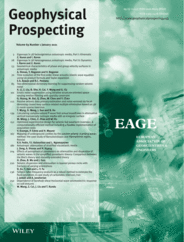
Full text loading...

The propagation of seismic waves through a saturated reservoir compresses the fluid in the pore spaces. During this transition, parts of seismic energy would be attenuated because of intrinsic absorption. Rock physics models make the bridge between the seismic properties and petrophysical reality in the earth. Attenuation is one of the significant seismic attributes used to describe the fluid behaviour in the reservoirs. We examined the core samples using ultrasonic experiments at the reservoir conditions. Given the rock properties of the carbonate reservoir and experiment results, the patchy saturation mechanism was solved for substituted fluid using the theory of modulus frequency. The extracted relationship between the seismic attenuation and water saturation was used in time–frequency analysis. We performed the peak frequency method to estimate the Q factor in the Gabor domain and determined the water saturation based on the computed rock physics model. The results showed how the probable fault in the reservoir has stopped the fluid movement in the reservoir and caused touching the water‐bearing zone through drilling.

Article metrics loading...

Full text loading...
References


Data & Media loading...

